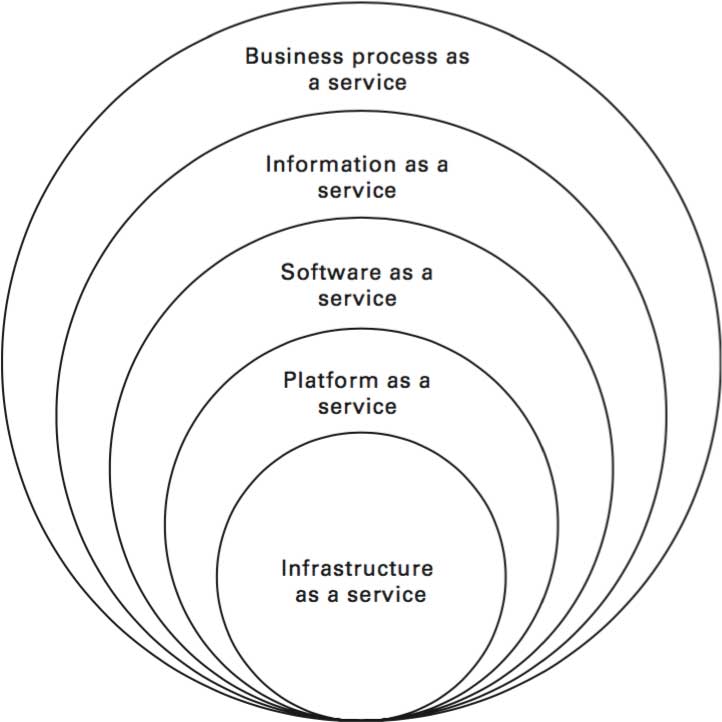Introduction to Cloud Computing
Due to the fact that cloud computing is relatively new computing model, there is a lot of hype and misinformation surrounding the term and lots of misattribution which has resulted in a lof of people not knowing what cloud computing actually is.
In his book, Cloud Computing from the MIT Essential Knowledge Series, Nayan B. Ruparelia states that for a service to qualify as cloud computing it has to meet the following criteria:
- Broad Network Access
- On Demand Self-Service
- Resource Pooling / Shared Services
- Rapid Elasticity
- Measured Service
Within cloud computing there are a range of services including: Infrastructure as a Service, Platform as a Service, Information as a Service & Business Process as a Service which will be detailed further in the website
It is important to remember however that these services are reliant on one another as the diagram below shows; if a company was to provide a SaaS product, they would also have to provide the platform (PaaS) & & Infrastructure (IaaS) as part of their cloud.

There are a wide range of clouds available both to the public and private, commercial and personal as well as for emerging technology such as IoT (Internet of Things):
Public Clouds
Public clouds are available to anyone over the internet for free or on a pay as you go basis subscription, examples of these include: Google Print, Google Drive, Microsoft Azure, Amazon EC2 and Dropbox.
Private Clouds
There are clouds that are private to companies and institutions and are described as being like a private internet that employees can access form anywhere but only if they are a member of the organisation who own the cloud. It is worth noting that private clouds are not exclusively web based, they can also be accessed via desktop applications such as Northumbria’s Simply Web.
Community Clouds
Community Clouds are similar to private clouds, however are accessible to niche communities of people / organisation with similar interests and needs, examples of this are NHS systems that are available across health care trusts / facilities or financial regulation clouds that can be accessed by select financial institutions.
Hybrid Clouds
Hybrid Clouds are made up of a combination of the above clouds and packaged in such a way that they become their own cloud services, an example of this would be if a company created a cloud with some private cloud cells (such as an in house customer relation management system or sales database) a community cloud cell (such as a financial regulation SaaS) and a public cloud cell (such as DropBox or EC2).
Personal Clouds
Personal clouds are a subset of private clouds that are specifically aimed at individual users, such as: DropBox, Google Drive & iCloud.
Cloud of Things
A Cloud of Things is a new term referring to a cloud that is aimed at offering services to Internet of Things (IoT) devices as oppose to servicing individuals or organisations. Examples of this include clouds that allow devices to interact with each other, backup data or process real time data.
"I don't need a hard disk in my computer if I can get to the server faster... carrying around these non-connected computers is byzantine by comparison."
